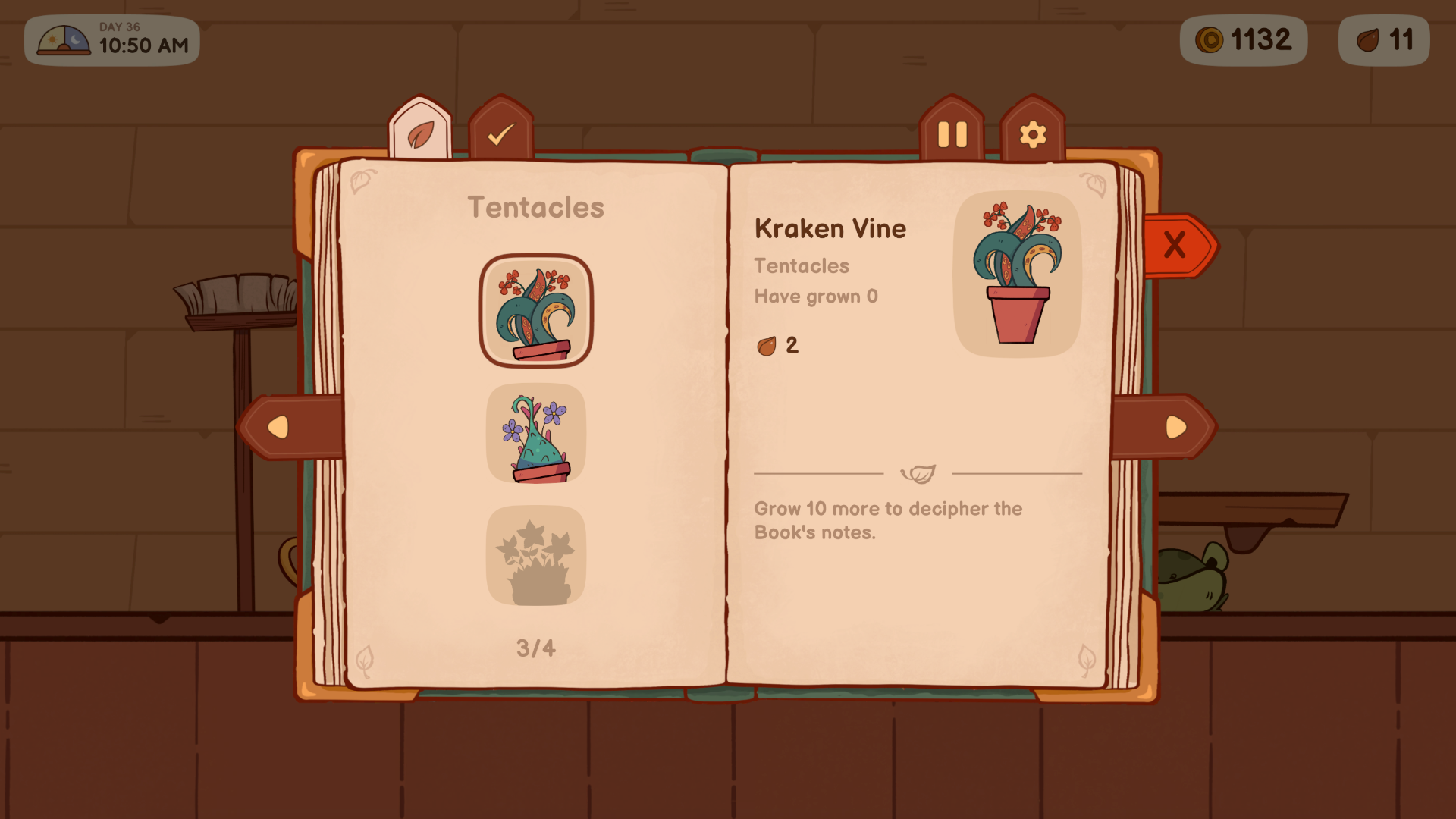- Welcome to Exilian.
News:
Take a look at what's going on, at The Town Crier!
Recent posts
#11
General Chatter - The Boozer / Re: Exilian Pub Out Of Context
Last post by Jubal - July 26, 2024, 08:41:42 PM"The fires are probably not set by killer whales."
"We've not confirmed whether the fires were set by orcas."
"It would be a difficult thing for them to orca-strate."
"Are you trying to teach killer whales how to do arson?"
"It's looking good for the squid, actually"
"this one specific squid, albert"
"are there even 700 people left on facebook? "
"We've not confirmed whether the fires were set by orcas."
"It would be a difficult thing for them to orca-strate."
"Are you trying to teach killer whales how to do arson?"
"It's looking good for the squid, actually"
"this one specific squid, albert"
"are there even 700 people left on facebook? "
#12
Computer Game Development - The Indie Alley / Re: The Green Book - Cozy Plan...
Last post by theeugene - July 26, 2024, 07:16:41 PMQuote from: Jubal on July 26, 2024, 06:40:12 PMOoh, I like it! Feels kinda in the same vein as Strange Horticulture a bit but much more with a "cute forest creatures" aesthetic?
I dropped some money for the early bird game on Kickstarter, I'll have a go at the demo someday soon
Thank you so much for your support. I really appreciate it!
I hope you enjoy the demo. Any feedback would be appreciated. We would like to implement a lot of cool ideas in the full version.
#13
Computer Game Development - The Indie Alley / Re: The Green Book - Cozy Plan...
Last post by Jubal - July 26, 2024, 06:40:12 PMOoh, I like it! Feels kinda in the same vein as Strange Horticulture a bit but much more with a "cute forest creatures" aesthetic?
I dropped some money for the early bird game on Kickstarter, I'll have a go at the demo someday soon
I dropped some money for the early bird game on Kickstarter, I'll have a go at the demo someday soon

#14
Computer Game Development - The Indie Alley / The Green Book - Cozy Plant-Gr...
Last post by theeugene - July 26, 2024, 05:37:52 PMHey everyone!
My spouse and I are thrilled to share a project we've been working on: The Green Book!
The Green Book is a cozy and enchanting game where players nurture magical plants and manage a whimsical garden shop inside a giant oak tree. With a focus on relaxation and mental well-being, the game offers unique plant behaviors, customizable environments, and delightful mini-games.
We've released a demo for PC, Mac, Linux, Android, iOS. In the demo, you can try the basic mechanics of growing plants and feel like a real gardener! Grow 10 unusual plants and develop your own shop from scratch. It's just a taste of the greater world and story that we want to create in the full game!
Also The Green Book is now live on Kickstarter.
If you'd like to help us get over the line or try the Green Book demo, you can check out the campaign here: https://www.kickstarter.com/projects/theeugene/the-green-book-0



My spouse and I are thrilled to share a project we've been working on: The Green Book!
The Green Book is a cozy and enchanting game where players nurture magical plants and manage a whimsical garden shop inside a giant oak tree. With a focus on relaxation and mental well-being, the game offers unique plant behaviors, customizable environments, and delightful mini-games.
We've released a demo for PC, Mac, Linux, Android, iOS. In the demo, you can try the basic mechanics of growing plants and feel like a real gardener! Grow 10 unusual plants and develop your own shop from scratch. It's just a taste of the greater world and story that we want to create in the full game!
Also The Green Book is now live on Kickstarter.
If you'd like to help us get over the line or try the Green Book demo, you can check out the campaign here: https://www.kickstarter.com/projects/theeugene/the-green-book-0



#15
Forum Games - The Beer Cellar! / Re: Ask a stupid question, get...
Last post by Jubal - July 26, 2024, 03:12:03 PMBecause in its view there can only be one kind of pet. All others, like this fiendish "car pet" must be removed!
Why is everything made of floor tiles?
Why is everything made of floor tiles?
#16
Forum Games - The Beer Cellar! / Re: Would you rather?
Last post by Jubal - July 26, 2024, 02:13:10 PMBell pepper, I would like to not be buried while alive.
Would you rather have magic powers over lemons, or be able to produce fancy plasterwork ceilings with the power of your mind?
Would you rather have magic powers over lemons, or be able to produce fancy plasterwork ceilings with the power of your mind?
#17
Forum Games - The Beer Cellar! / Re: Word Association
Last post by Jubal - July 26, 2024, 02:09:06 PMBaldur's
#18
Forum Games - The Beer Cellar! / Re: Word Association
Last post by Rob_Haines - July 26, 2024, 12:36:15 PMGate
#19
Forum Games - The Beer Cellar! / Re: Ask a stupid question, get...
Last post by The Seamstress - July 26, 2024, 11:15:24 AMI don't know, tbh. But I hope the illness is gone by now, if not, sue it and win so you at least get some financial gain out of the whole ordeal. You actually could sue it anyway, for the inconvenience it caused.
Why does my rabbit eat the carpet?
Why does my rabbit eat the carpet?
#20
Forum Games - The Beer Cellar! / Re: Word Association
Last post by The Seamstress - July 26, 2024, 10:52:05 AMsalmon
